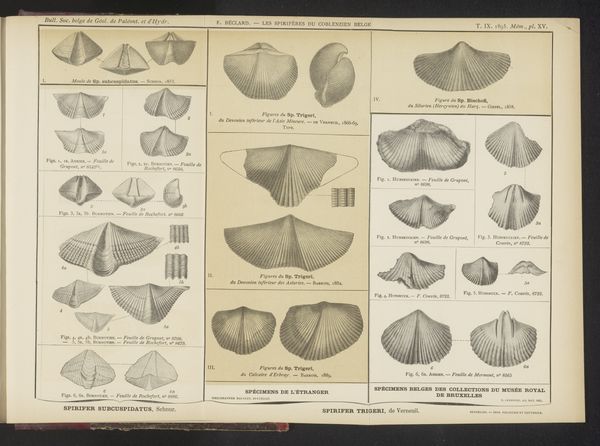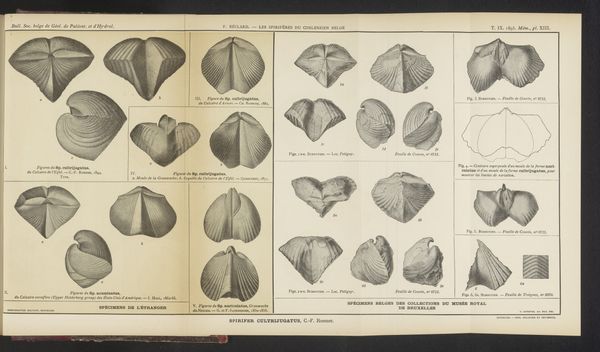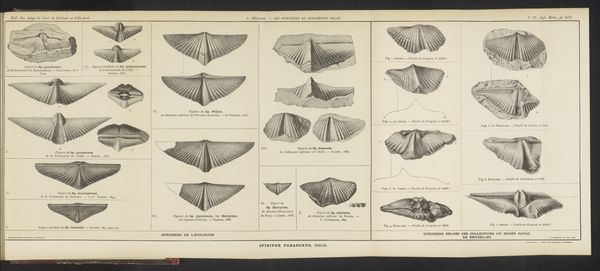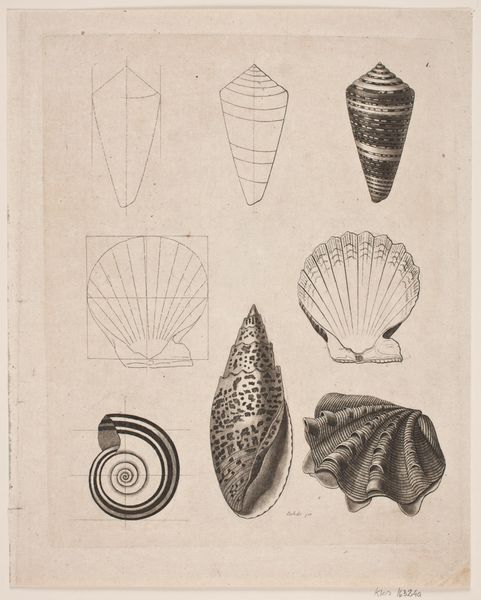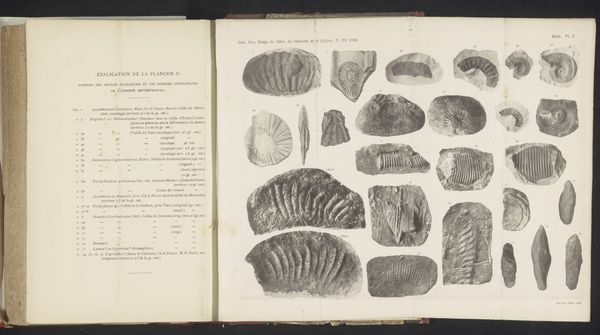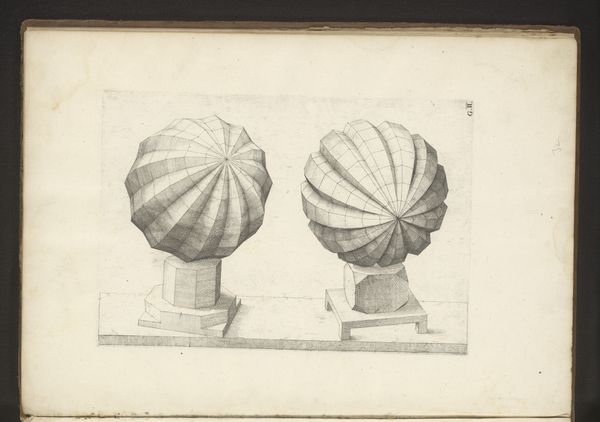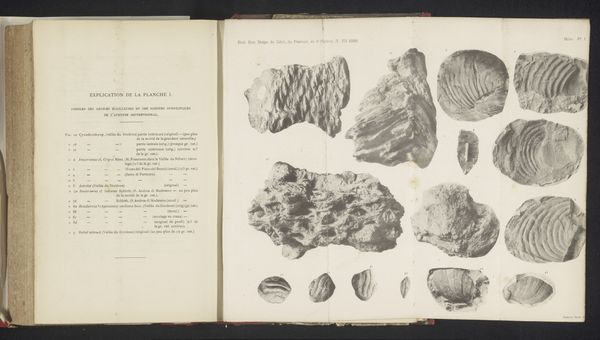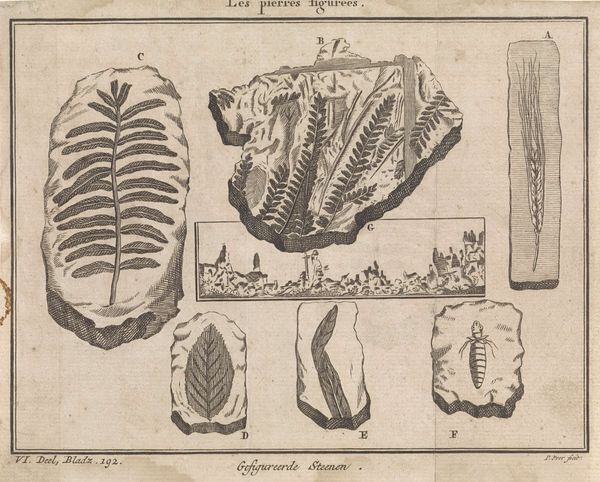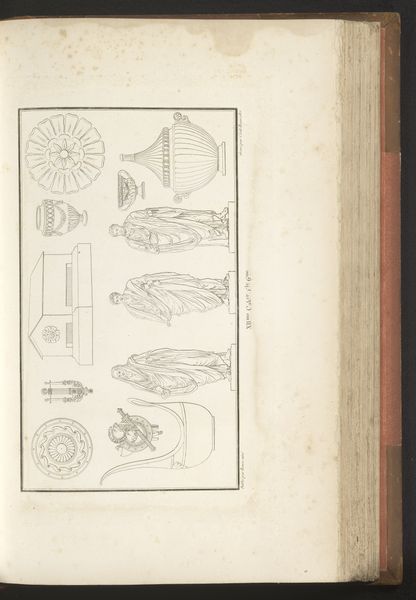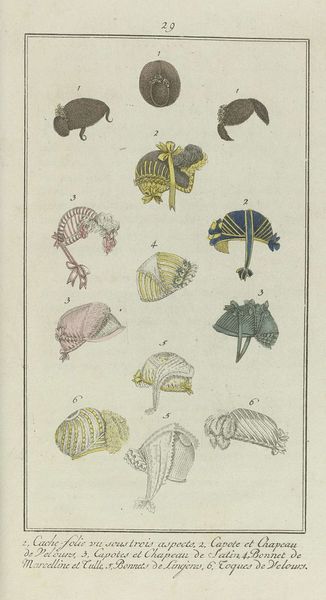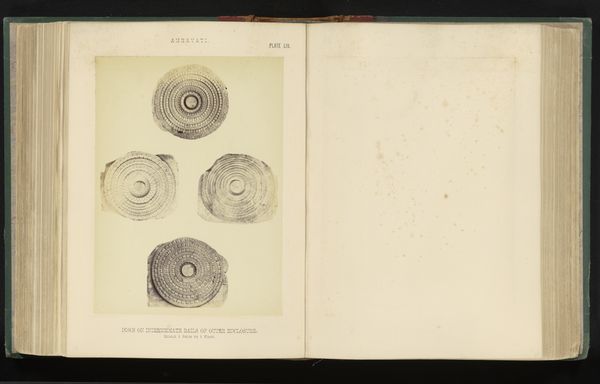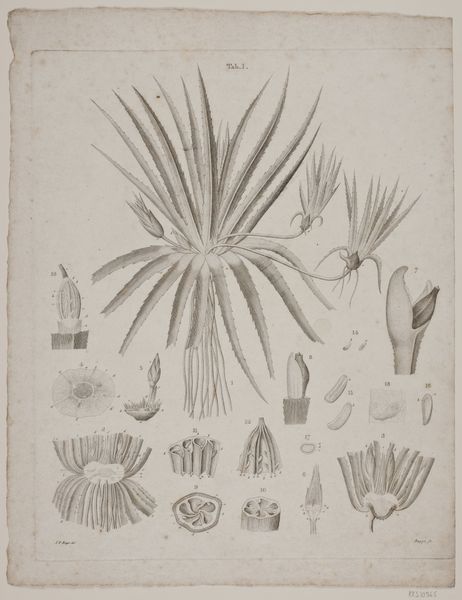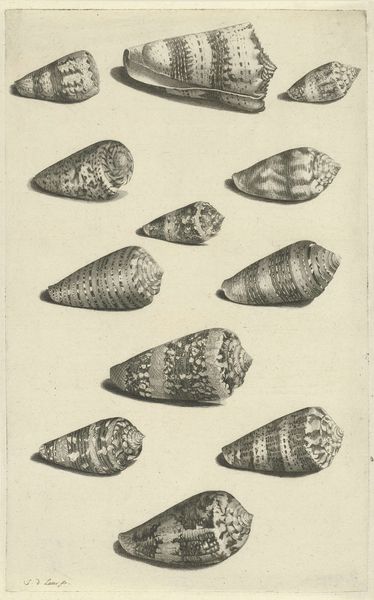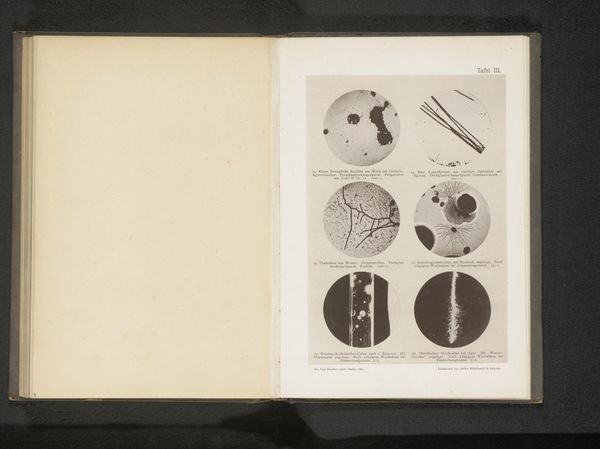
drawing, print, graphite, engraving
#
drawing
# print
#
graphite
#
engraving
Dimensions: height 200 mm, width 410 mm
Copyright: Rijks Museum: Open Domain
Editor: This is an… unusual piece. "Verzameling gefossiliseerde armpotigen, Spirifer"— Collection of Fossilized Brachiopods, Spirifer, sometime before 1894 by an anonymous artist. It's a graphite drawing and engraving print. Honestly, it reminds me of a page from a textbook. It's very informational but I am unsure about its intent as fine art. How should we interpret it? Curator: I'm interested in thinking about how these materials speak to a period of expanding industrial and scientific processes. Printmaking allowed for mass reproduction and distribution of information – who was the intended audience, and what was their access to such material? What processes of labour went into creating and disseminating this information? Editor: Well, you've given me a lot to think about! The level of detail in these drawings is extraordinary for mass production. Curator: Exactly. Let’s also consider the labor and skill required to create the original drawings, transfer them to plates, and produce these prints. Think about the context – before photography was widespread. Prints were crucial for sharing scientific knowledge. These brachiopods would likely be important to growing industrial interests. Editor: You're right, I didn't consider the historical limitations. So, the act of printing became almost as crucial as what was being represented. This makes me think about how even ‘objective’ scientific representation is dependent on social and economic systems. Curator: Precisely! How these "objective" materials are interpreted depends so heavily on their mode of production and their consumption within society. Editor: That's fascinating! I guess, viewing it as part of an industry helps connect the art with its time in an accessible way. Curator: Indeed, focusing on the means of production makes what initially appears to be just an educational chart into a compelling insight into past industrial and social activity. Editor: I agree. It’s so different from how I usually analyze art, but incredibly interesting. Thank you!
Comments
No comments
Be the first to comment and join the conversation on the ultimate creative platform.
